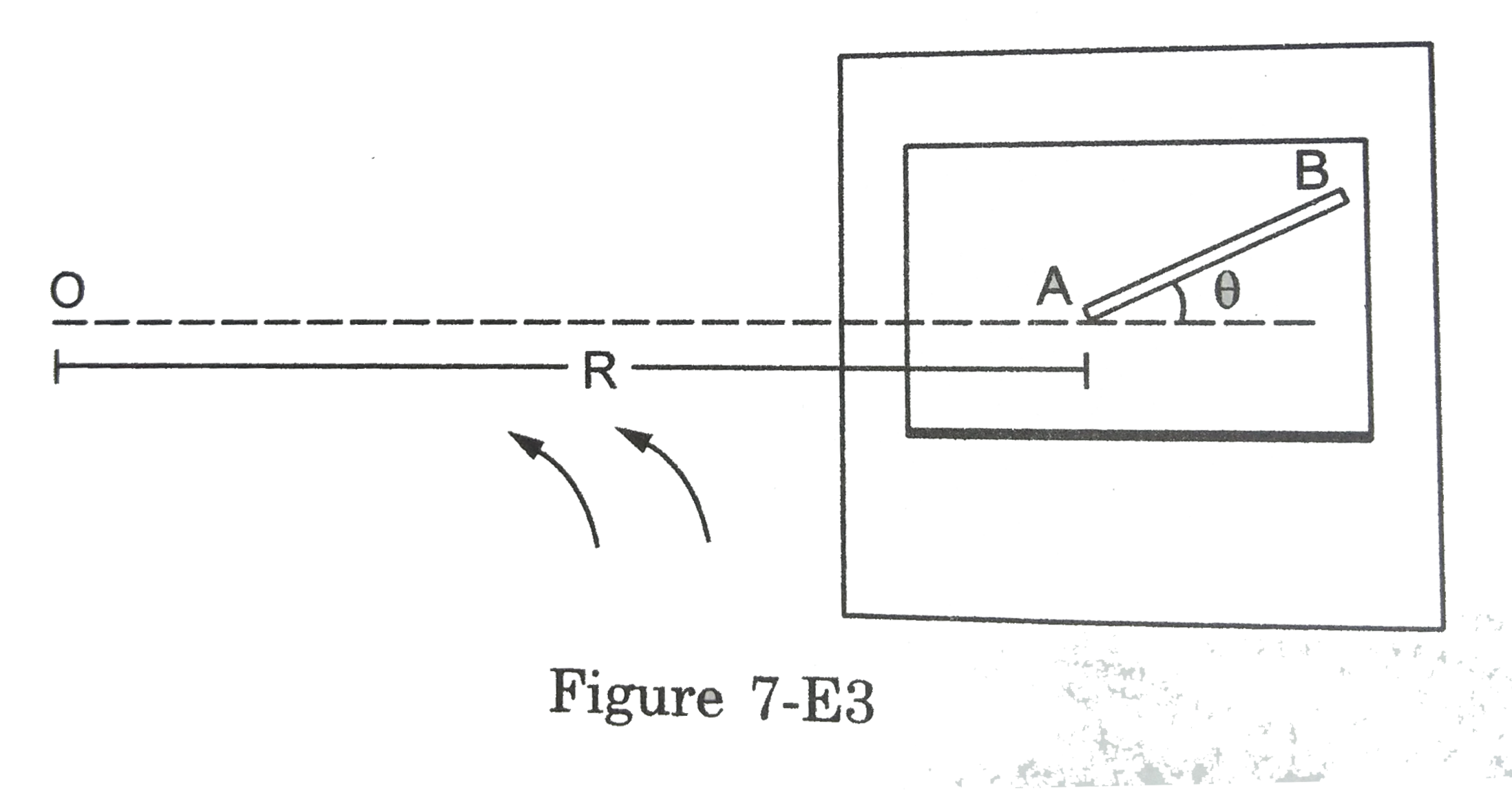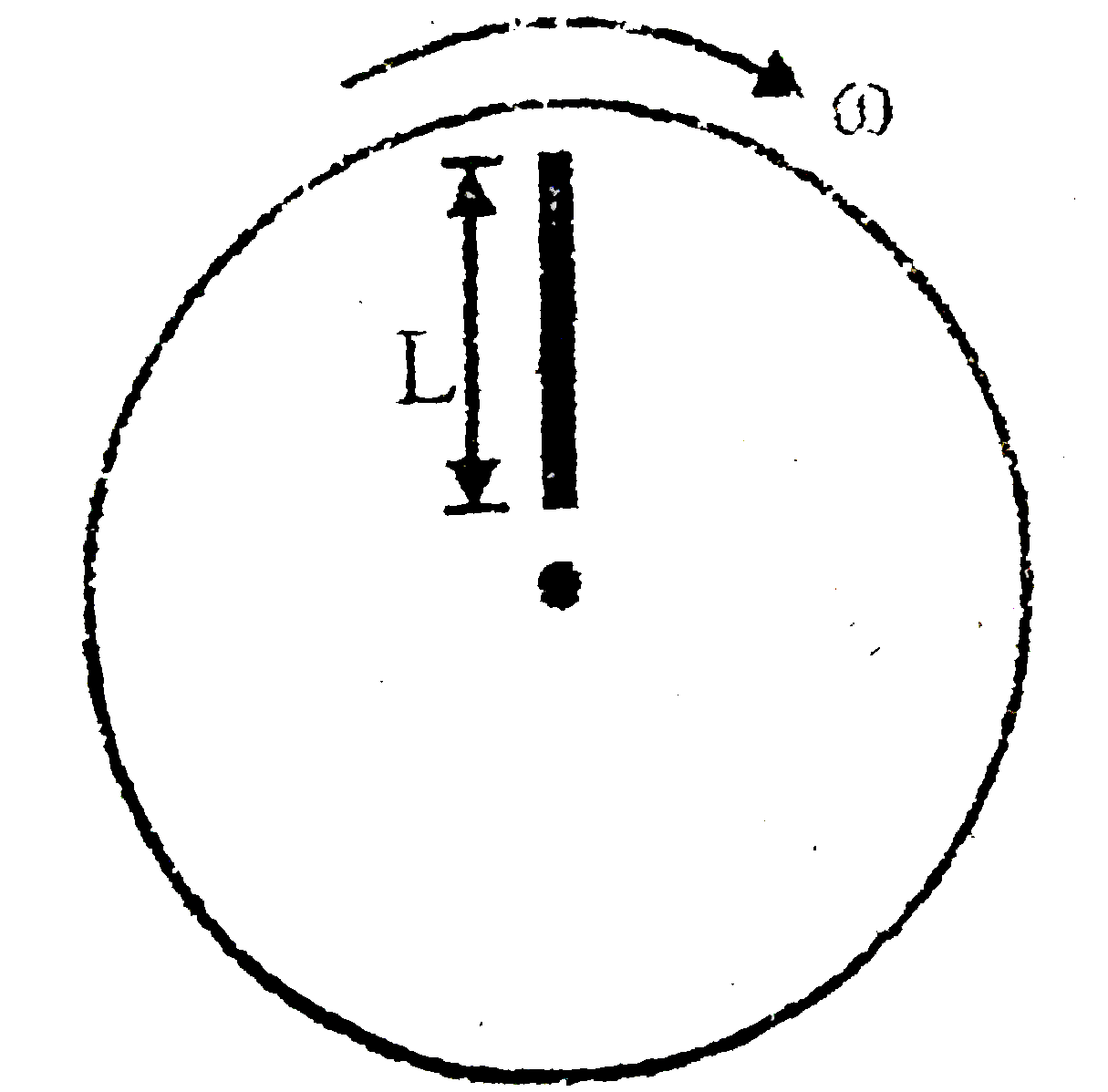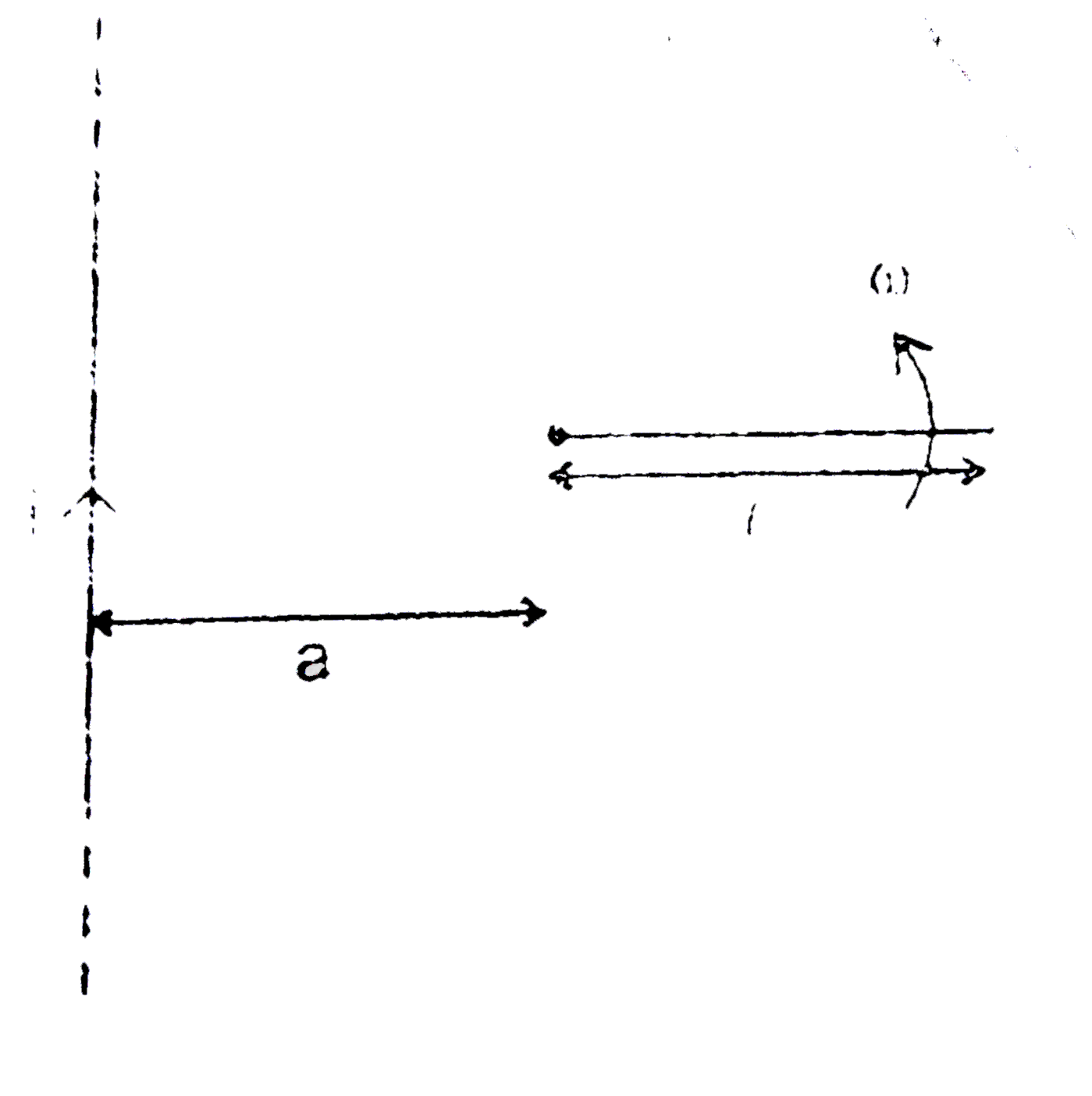A table with smooth horizontal surface is turning at an angular speed about its axis. A groove is made on the surface along a radius and a particle is gently placed inside the groove at a distance a from the centre. Find the speed of the speed of the particle as its distance from teh centre becomes L.
To solve the problem, we need to find the speed of a particle placed in a groove on a rotating table as its distance from the center changes from a to L. We will use the principles of circular motion and calculus to derive the speed.
1. Understanding the Setup:
- The table is rotating with a constant angular speed ω.
- A particle is placed at a distance a from the center of the table in a groove that allows it to move radially outward.
2. Defining Variables:
- Let v be the speed of the particle with respect to the table.
- Let x be the instantaneous distance of the particle from the center of the table.
3. Relating Acceleration and Velocity:
- The centripetal acceleration a of the particle is given by the formula:
a=xω2
- According to the chain rule in calculus, we can express acceleration in terms of velocity:
a=vdvdx
4. Setting Up the Equation:
- Equating the two expressions for acceleration, we have:
xω2=vdvdx
5. Separating Variables:
- Rearranging gives:
vdv=ω2xdx
6. Integrating Both Sides:
- Now we will integrate both sides. The limits for v will be from 0 to v and for x from a to L:
∫v0vdv=∫Laω2xdx
7. Calculating the Integrals:
- The left side integrates to:
v22∣∣∣v0=v22
- The right side integrates to:
ω2(x22)∣∣∣La=ω2(L22−a22)=ω22(L2−a2)
8. Setting the Integrals Equal:
- Setting the results of the integrals equal gives:
v22=ω22(L2−a2)
9. Solving for v:
- Multiplying through by 2 and rearranging gives:
v2=ω2(L2−a2)
- Taking the square root results in:
v=ω√L2−a2
Final Result:
The speed of the particle as its distance from the center becomes L is given by:
v=ω√L2−a2
- The table is rotating with a constant angular speed ω.
- A particle is placed at a distance a from the center of the table in a groove that allows it to move radially outward.
- Let v be the speed of the particle with respect to the table.
- Let x be the instantaneous distance of the particle from the center of the table.
- The centripetal acceleration a of the particle is given by the formula:
a=xω2
- According to the chain rule in calculus, we can express acceleration in terms of velocity:
a=vdvdx
- Equating the two expressions for acceleration, we have:
xω2=vdvdx
- Rearranging gives:
vdv=ω2xdx
- Now we will integrate both sides. The limits for v will be from 0 to v and for x from a to L:
∫v0vdv=∫Laω2xdx
- The left side integrates to:
v22∣∣∣v0=v22
- The right side integrates to:
ω2(x22)∣∣∣La=ω2(L22−a22)=ω22(L2−a2)
- Setting the results of the integrals equal gives:
v22=ω22(L2−a2)
- Multiplying through by 2 and rearranging gives:
v2=ω2(L2−a2)
- Taking the square root results in:
v=ω√L2−a2
The speed of the particle as its distance from the center becomes L is given by:
v=ω√L2−a2
Topper's Solved these Questions
- NEWTON'S LAWS OF MOTION 2Book:CENGAGE PHYSICS ENGLISHChapter:NEWTON'S LAWS OF MOTION 2Exercise:Subjective
Explore 21 Videos
- NEWTON'S LAWS OF MOTION 2Book:CENGAGE PHYSICS ENGLISHChapter:NEWTON'S LAWS OF MOTION 2Exercise:Single Correct
Explore 87 Videos
- NEWTON'S LAWS OF MOTION 2Book:CENGAGE PHYSICS ENGLISHChapter:NEWTON'S LAWS OF MOTION 2Exercise:Exercise 7.2
Explore 16 Videos
- NEWTON'S LAWS OF MOTION 1Book:CENGAGE PHYSICS ENGLISHChapter:NEWTON'S LAWS OF MOTION 1Exercise:Integer
Explore 5 Videos
- PROPERTIES OF SOLIDS AND FLUIDSBook:CENGAGE PHYSICS ENGLISHChapter:PROPERTIES OF SOLIDS AND FLUIDSExercise:INTEGER_TYPE
Explore 2 Videos
Similar Questions
A table with smooth horiztonal surface is truning at an angular speed ω abouyt its axis. A groove is made on the surface along a radius and a particle is gently placed inside the groove at a distance a from the centre. Find the speed of the speed of the particle as its distance from teh centre becomes L.
View Solution_S01_013_Q01.png)
A very small groove is made in the earth, and a particle of mass m0 is placed at R2 distance from the centre. Find the escape speed of the particle for that place.
View Solutiona narrow tunnel is dug along the diameter of the earth, and a particle of mass m0 is placed at R2 distance from the centre. Find the escape speed of the particle from that place.

View SolutionA tunnel is dug along a diameter of the earth. Find the force in on a particle of mass m placed in the tunnel at a distance x from the centre.
View SolutionA table with smooth horizontal surface is fixed in a cabin that rotates with a uniform angular velocity ω in a circular pathof radius R. A smooth groove AB of length L(<<R) is made on the surface of the table. The groove makes an angleθ with the radius OA of the circle in which the cabin rotates. A small particle is kept at the point A in the groove and is released to move along AB. Find the time taken by tehparticle to reach the point B.

View SolutionA table with smooth horizontal surface is fixed in a cabin that rotates with a uniform angular velocity ω in a circular pathof radius R. A smooth groove AB of length L(<<R) is made on the surface of the table. The groove makes an angleθ with the radius OA of the circle in which the cabin rotates. A small particle is kept at the point A in the groove and is released to move along AB. Find the time taken by tehparticle to reach the point B.

View SolutionA wheel is rotating at an angular speed ω about its axis which is kept vertical. An identical wheel initially at rest is gently dropped into the same axle and the two wheels start rotating with a common angular speed. Find this common angular speed.
View SolutionA uniform rod of mass m and length L lies radialy on a disc rotating with angular speed ω in a horizontal plane about vertical axis passing thorugh centre of disc. The rod does not slip on the disc and the centre of the rod is at a distance 2L from the centre of the disc. them the kinetic energy of the rod is

View SolutionThe speed v of a particle moving along a straight line is given by a+bv2=x2 where x is its distance from the origin. The acceleration of the particle is
View SolutionA rod of length l is rotating with an angular speed ω about its one end which is at a distance a from an infinitely long wire carrying current i.Find the emf induced in the rod at the instant shown in the figure.

View Solution